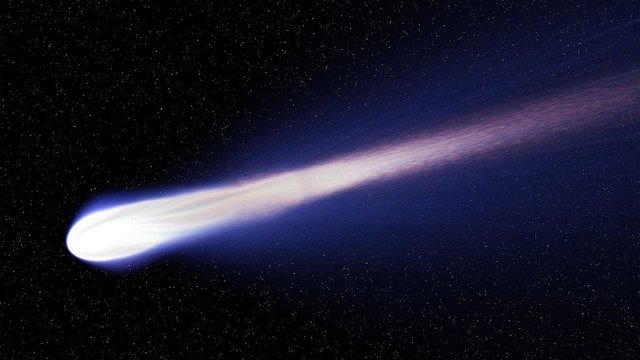The comet 2I/Borisov captured the public imagination as only the second known interstellar object to pass through our solar system, sparking hopes of some form of contact with advanced extraterrestrial life. But there’s bad news.
Hopes were high that we might find some sign of developed alien life on the comet, but sadly a recent announcement by the Breakthrough Listen project confirms that no technological signatures or traces (that we could detect) were found that might hint at intelligent life having interacted with the comet. 
Illustration: © A Owen from Pixabay
The announcement was revealed by SETI (Search for Extraterrestrial Intelligence) scientists at the annual meeting of the American Association for the Advancement of Science (AAAS) this month.
“If interstellar travel is possible, which we don't know, and if other civilizations are out there, which we don't know, and if they are motivated to build an interstellar probe, then some fraction greater than zero of the objects that are out there are artificial interstellar devices," explained astronomer Steve Croft from UC Berkeley's SETI Research Center.
The first interstellar object humanity ever encountered, 'Oumuamua, generated a similar amount of hype, leading some Harvard boffins to speculate as to whether it might indeed be an 'alien spacecraft.' Sadly, it was not.
As with comet 2I/Borisov, researchers at SETI scanned 'Oumuamua for radio signals which would prove the object had something – anything – technological on board that would point to another space-faring civilization out there in the cosmos.
"We were looking for a signal that would prove that this object incorporates some technology – that it was of artificial origin," astrophysicist Gerry Harp from the SETI Institute outlined in 2018.
"We didn't find any such emissions, despite a quite sensitive search."
This doesn't completely disprove the presence of alien technology on board the space rocks, however; it just means we can't find any traces of it using our current methods and equipment, which are searching for specific technologies.
In the meantime, Breakthrough Listen researchers have released almost two petabytes of radio telescope survey data, which they are now crowdsourcing efforts to sift through in the hopes of finding technosignatures or undiscovered natural astronomical phenomena.
Among the vast trove of data is a subset of radio emissions from 20 nearby star systems in the Earth Transit Zone (meaning they're at just the right angle to watch our planet pass in front of our sun, from their perspective) which are the next, great hope for humanity to find our counterparts among the stars.
"It is how we discovered other exoplanets, so it kind of makes sense to extrapolate and say that that might be how other intelligent species find planets as well," said lead researcher Sofia Sheikh from Penn State University.
SETI has a perfect track record of scanning tax payers wallets to determine the maximum amount of coin they can extract.
Downvoting a post can decrease pending rewards and make it less visible. Common reasons:
Submit
they destroyed themselves... most probable bet, maybe there are few still alive, but they are so prudent, now... unless they forgot... what ever.... let's stay focused and not distracted, if an alien space fleet comes to harvest human brains that they grow on earth naturally (ie with taste), what will be able to do? if they come every single human... they will be able...
anyway, don't forget their first contact was laika... not a good image... and who knows they maybe cloned it, teleported her back to the fleet... who knows... it sounds crazy? like going to moon maybe?
Downvoting a post can decrease pending rewards and make it less visible. Common reasons:
Submit